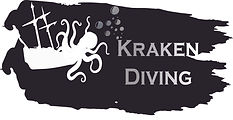Wrecks and Reefs in Scapa Flow
- Kraken Diving

- Aug 29, 2023
- 3 min read
Our Divemaster Intern Becky has been thinking about the British marine life and sites to see around our waters in Orkney so we thought we would share what she has to say.
"When you hear Scapa Flow, your first thought may be a wreck heads paradise but how would you feel if I told you Orkney has its fair share of marine life! From flowing seagrass beds to star fish covering every square inch of the German fleet like a stary night sky, Orkney is not to be slept on when it comes to its ocean inhabitants.

Brittle starfish covering the wreck SMS Karlsruhe
As the German Fleet has been laying on the seabed for the past century, the ocean has had plenty of time to reclaim these gigantic ships. The wrecks of scapa flow now showcase a much softer side of their lives covered in kelp and dead man's fingers. There is a fascinating juxtaposition between the heavily engineered military history of the German fleet and their now existence as an artificial reef, home to an aray of life bellow the waves.

A friendly wrasse eating some silt on the WW2 German Escort Wreck F2
For me, there are two stand-out wrecks that I feel encapsulate this juxtaposition perfectly; these are the Reginald at Churchill Barrier 3 and the SMS Brummer.
Laying in just 5m the Reginald is a stunning snorkelling and diving location on a sunny day. As the sun pierces the water I could spend hours watching the diversity of life that now calls the Reginald home. A personal highlight on this dive is watching the barnacles feeding along the skeletal frame of what remains of the old passenger ship. Not only do you get to enjoy the Reginald block ship at barrier 3, the Churchill Barriers themselves are a beautiful structure to focus some of your dive. The stone blocks have provided an ideal surface for all forms of life. On many dives, I have enjoyed watching orange clubbed nudibranch nestled in amongst the barriers blocks.

Life covering the ferry wreck Reginald
Within the flow itself, what first inspired my excitement towards the German fleet is the SMS Brummer. This light cruiser was a mine laying vessel and still sports easily identifiable mine laying tracks and a search light iris which can only be seen on this wreck. What first excited me around the Brummer was its uniqueness compared to the rest of the Scapa Flow wrecks, offering an alternative to the heavily weaponised dreadnoughts such as the Markgraf and König.

Iris of the SMS Brummer
This tactical side of warfare captured my interest, this ship was capable of carrying ~450 mines at any one time that could be deployed from a series of rail tracks. In addition one of the key features of the Brummer is its searchlight iris, a beautiful brass disk spanning 2m used to focus the searchlights beam. Living along side this slice of military history now include brittle stars, flatfish and even dogfish, a small species of shark that grace the British Isles.
Beyond the World War wrecks that dominate Orkneys diving scene, Orkney is also home to a number of beautiful habitats including towering wafty kelp forests teaming with urchins, shoaling fish, crustaceans and seagrass beds, a vital habitat for the oceans health.

Scorpian fish at the Churchill Barriers
I have also been lucky enough to snorkel the St Peter's pool, on the Eastern side of Orkney mainland. This sheltered bay offers opportunity to snorkel a pristine seagrass bed, arguably one of the nicest examples around the British Isles. Seagrass beds are home to a wide range of wildlife, from shoaling juvenile fish to snakelocks anenome, stalked jellyfish and of course the beautiful seagrass bed itself!
Across the board, it is understandable how Orkney has received its reputation as a world class diving destination. This can be seen not only for its gigantic German Battleships but also its representation of unspoilt marine life that can be explored across all 20 inhabited islands."
Convinced you to come diving in Orkney yet?
%20JPEG.jpg)

Comments